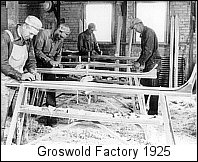

About 5000 years ago, Stone-Age inhabitants of Scandinavia were already using skis as a means of transport over the snow-covered land. The old Norse word skíð (stick of wood) is the origin of the modern word “ski” which is found today in every language around the world. In the early days, skiing was mostly cross-country then people discovered the fun of jumping. In the 1800's, skiing evolved to the Telemark and downhill style and downhill skiing took off in popularity in the early 1930's. Historical Ski Highlights 1850's - The cambered ski was invented by woodcarvers in the province of Telemark, Norway. The bow-shape cambered ski arches up toward the center to distribute the weight of the skier more evenly across the length of the ski. Before this, skis had to be thick to glide without bowing downward and sinking in the snow under the skier's weight, concentrated in the middle. 1856 - From 1856 to 1876 Snowshoe
Thompson made legendary 90-mile treks on skis over snowdrifts
up to 50 feet high and through blizzards with up to 80 mile per hour
winds, to deliver mail to those living in isolation. He was the sole
link between California and the Atlantic states during the long winter
months. All attempts by postmen to cross the Sierra on woven Canadian
and Native American snowshoes had failed until one day in late 1855,
Thompson saw an ad in the Sacramento Union: "People Lost to the
World; Uncle Sam Needs a Mail Carrier." Thompson used his homemade
10-foot long, 25 pound oak skis to carry mail over the 7,500 foot mountain
passes. 1868 - Sondre Norheim demonstrated the Telemark ski; the first with a side cut that narrowed the ski underfoot while the tip and tail remained wider. In the same way as the camber, the side cut produced a ski that flexed more easily when tipped on edge, so that in a turn its edge followed the shape of the turn instead of skidding sideways. Norheim and his friends formed a small pioneer group of early skiers who improved the ski as they developed the first dynamic turns in downhill running, from 1850 to 1900.
1885 - Herman “Jackrabbit” Johannsen as a boy, ventured on his cross-country skis through the “Nordmarkka” near Christiania (Oslo), Norway. Travel in the winter between the farms in that area was primarily on skis. People from the city of Christiania would come to the farms to ski in the winter and go on long ski tours. Members of the Christiania Ski Klubb began to specialize in long, strenuous ski tours. This was, in fact, the beginning of cross-country ski touring, as we know it today. 1888 - Fridtjof Nansen, a Norwegian explorer successfully crossed Greenland on skis. His accomplishment echoed throughout the world, increasing the popularity of skiing by leaps and bounds.
1912 - 
1925-1932 - Further west, pioneer ski manufacturing companies included Anderson & Thompson Incorporated located in Seattle, Washington and the Groswold Ski Company of Denver, Colorado, founded by the Norwegian born champion ski jumper, Thor Groswold in 1932. 1932 - The first successful three-layer laminated skis were invented by Bjørn Ullevoldsaeter in Norway and independently by George Aaland in Seattle. Because they were made with waterproof casein glues, the skis did not delaminate easily and lasted much longer.Licensing rights to produce Splitkein skis in the United States were obtained by Thor Groswold, of Groswold Ski Manufacturers in Denver, Colorado and Northland ski factory in Saint Paul, Minnesota. The first of these skis were marketed under the Splitkein ("split-cane") label in Norway and as Anderson & Thompson skis in the U.S. 1943 - The Tenth Mountain Division of the United States Army was trained on skis at Camp Hale in Colorado and helped Allied troops to win World War II by defeating the Germans in northern Italy.
|
© Copyright 2010, Wood N Skis